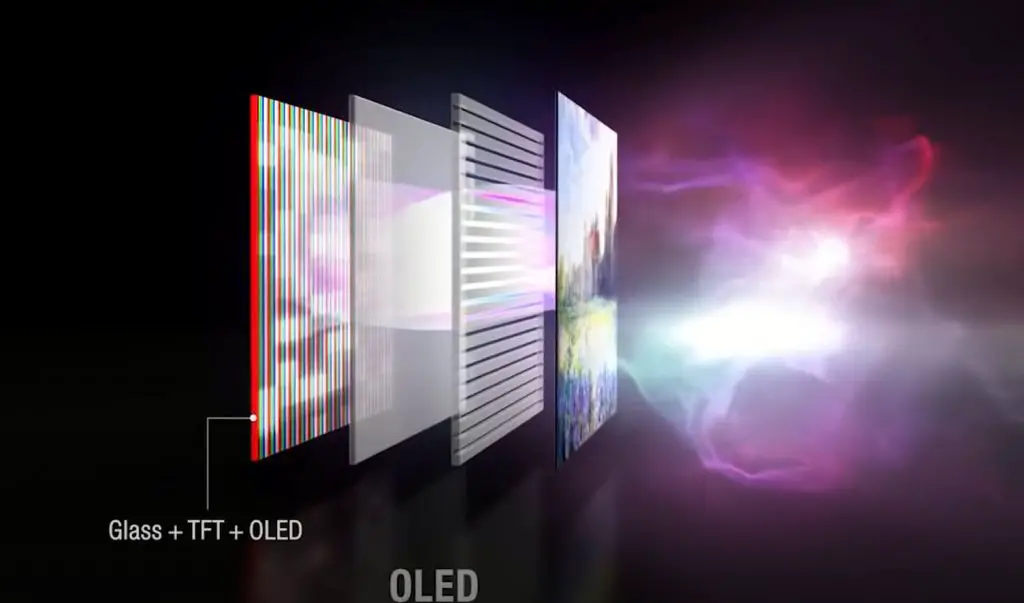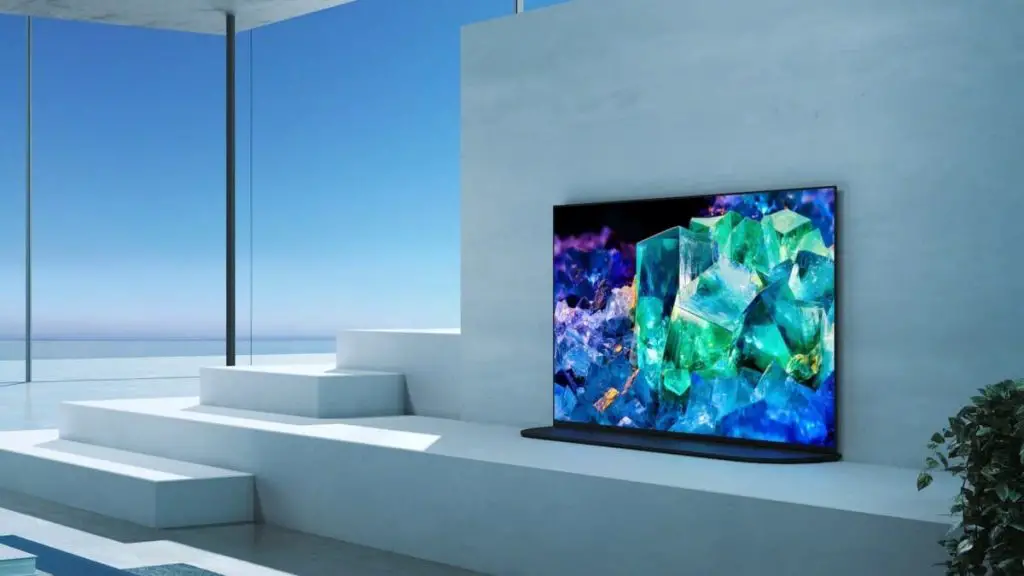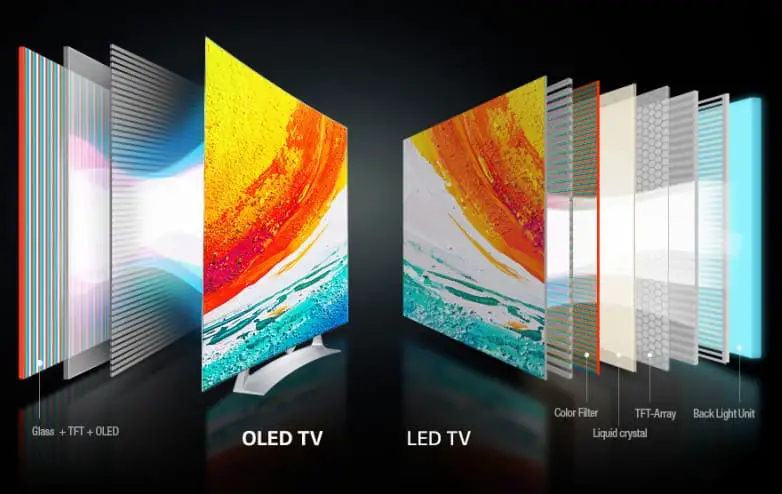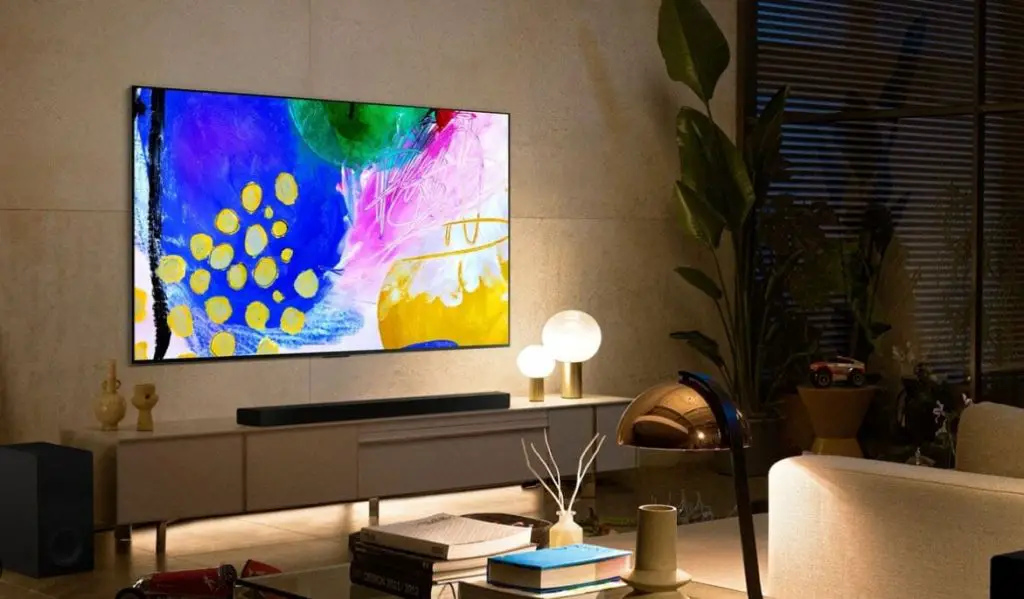OLED Displays: A Comprehensive Guide
I. Introduction to OLED Displays – What is an OLED display and the History
OLED stands for organic light-emitting diode, and it’s a type of display technology that uses a layer of organic material to produce light. OLED displays are thin, energy-efficient, and have excellent picture quality, making them popular in smartphones, TVs, and other devices.
OLED technology has come a long way since it was first researched in the 1970s. Over the years, scientists and engineers have worked to improve OLED technology, and it’s now used in a wide range of products. Some key milestones in the development of OLED include the first OLED display demonstration in 1987 and the first commercial OLED display in 1996.
II. How OLED Displays Work
The Structure And Components Of OLED Displays
OLED displays are made up of several layers, including a layer of organic material that emits light when an electric current is applied to it. The organic material is sandwiched between two electrodes, and the whole assembly is sealed in a protective layer.
When an electric current is applied to the electrodes, it causes the organic material to emit light. The light is then emitted through the front of the display, creating the images and text that we see. OLED displays are thin and lightweight, making them ideal for use in portable electronic devices.
The Principles Of OLED Technology
OLED technology is based on the principle of electroluminescence, which is the process by which light is produced when an electric current is applied to a material. In OLED displays, the organic material is highly efficient at converting electricity into light, which allows the display to be bright and energy-efficient.
OLED displays also have a fast response time, which means that they can display fast-moving graphics or videos without any lag. This makes them ideal for use in devices that require fast-moving graphics or video, such as video games or movies.
III. Advantages of OLED Displays
- High contrast ratio. One of the main advantages of OLED displays is their high contrast ratio. This means that the difference between the darkest and lightest areas of the display is much greater than on other types of displays. This results in images that are more vibrant and lifelike. OLED displays can display deep blacks, which makes them ideal for use in devices that require high-quality images, such as TVs or smartphones.
- Wide viewing angles. OLED displays have wide viewing angles, which means that the image quality remains consistent regardless of the angle from which you view the display. This is in contrast to other types of displays, such as LCDs, which can have narrow viewing angles and may appear washed out or distorted when viewed from certain angles. The wide viewing angles of OLED displays make them ideal for use in devices that are meant to be viewed by multiple people at the same time, such as TVs or computer monitors.
- Fast refresh rates. OLED displays have fast refresh rates, which means that they can display fast-moving graphics or video without any lag. This makes them ideal for use in devices that require fast-moving graphics or video, such as video games or movies.
- Energy efficiency. OLED displays are energy-efficient, which means that they use less power than other types of displays. This can help to extend the battery life of devices that use OLED displays, such as smartphones or tablets. In addition, OLED displays do not require a backlight, which further improves their energy efficiency.
IV. Applications of OLED Displays
Some common applications of OLED displays include:
- Smartphones: OLED displays are widely used in smartphones due to their excellent picture quality, energy efficiency, and thin, lightweight design. Many high-end smartphones use OLED displays, and they are often preferred by manufacturers due to their superior performance compared to other types of displays.
- Televisions: OLED TVs are known for their excellent picture quality, with deep blacks, high contrast ratios, and wide viewing angles. OLED TVs are also thin and lightweight, making them a popular choice for consumers who want a high-quality TV that is also aesthetically pleasing.
- Computer monitors: OLED displays are also used in computer monitors, particularly high-end monitors that are designed for professional use. OLED monitors offer excellent picture quality and fast refresh rates, which make them ideal for use in applications that require fast-moving graphics or video, such as video editing or gaming.
- Wearable devices: OLED displays are also used in wearable devices, such as smartwatches and fitness trackers. OLED displays are thin, lightweight, and energy-efficient, which makes them well-suited for use in devices that need to be worn for long periods of time. This post is from HiFiReport.com.
- Virtual and augmented reality headsets: OLED displays are used in virtual and augmented reality (VR and AR) headsets due to their fast refresh rates and excellent picture quality. OLED displays are able to display fast-moving graphics and video without any lag, which is important for providing a realistic VR or AR experience.
- Automotive displays: OLED displays are also used in automotive displays, such as those found in dashboard displays or infotainment systems. OLED displays are thin and lightweight, which makes them well-suited for use in automotive applications. They also have wide viewing angles, which makes them ideal for use in displays that need to be viewed from different angles.
V. Challenges and Limitations of OLED Displays
Like all technologies, OLED displays have their own set of challenges and limitations.
- Short lifespan. One of the main challenges of OLED technology is its relatively short lifespan compared to other types of displays. OLED displays can degrade over time, which can result in a loss of brightness and color accuracy. The lifespan of OLED displays can be affected by a variety of factors, including the type of organic material used, the amount of use the display receives, and the ambient temperature.
- Susceptibility to burn-in. OLED displays are also prone to a phenomenon known as “burn-in,” which occurs when an image is displayed on the screen for an extended period of time and leaves a permanent ghost image on the display. Burn-in can be caused by displaying static images or by displaying images that have bright, static elements, such as a news ticker or a status bar. Burn-in is more likely to occur on OLED displays than on other types of displays, and it can be difficult or impossible to repair once it has occurred.
- Limited color gamut. OLED displays have a limited color gamut, which means that they are not able to display the full range of colors that are visible to the human eye. This can result in images that appear less vibrant and lifelike compared to those displayed on other types of displays.
- Manufacturing challenges. OLED technology can be difficult to manufacture due to the complex nature of the organic material used in OLED displays. There are also challenges associated with scaling up OLED production, as the manufacturing process can be expensive and time-consuming.
VI. The Future of OLED Displays
There are a number of new developments and innovations in OLED technology that are expected to shape the future of OLED displays. These include advances in materials science that are expected to improve the lifespan and performance of OLED displays, as well as new manufacturing techniques that are aimed at making OLED production more efficient and cost-effective.
There are also a number of new applications for OLED technology that are being explored, such as OLED lighting and flexible OLED displays that can be bent or folded.
The potential applications and markets for OLED displays are vast, and it’s likely that OLED technology will continue to expand and evolve in the coming years. OLED displays are already used in a wide range of electronic devices, including smartphones, TVs, and computer monitors, and it’s likely that they will continue to be a popular choice for manufacturers due to their excellent picture quality and energy efficiency.
Other potential applications for OLED technology include lighting, automotive displays, and wearable devices. It’s also possible that OLED displays could be used in new and emerging markets, such as virtual and augmented reality headsets or smart home devices.
VII. Q&A about OLED
What is the difference between LED and OLED?
LED (light-emitting diode) and OLED (organic light-emitting diode) are both types of display technology that use light-emitting diodes to produce images. However, there are some key differences between the two technologies.
One of the main differences between LED and OLED is how they produce light. LED displays use inorganic materials to produce light, while OLED displays use organic materials. This means that OLED displays are generally thinner and lighter than LED displays, as the organic materials used in OLEDs are more flexible than the inorganic materials used in LEDs.
Another difference is the way the pixels in the display are arranged. In an LED display, the pixels are arranged in a grid and are lit by a backlight. In an OLED display, each pixel is made up of an OLED material that produces its own light, so there is no need for a backlight. This allows OLED displays to have a higher contrast ratio and wider viewing angles than LED displays.
Additionally, OLED displays have faster response times and are more energy-efficient than LED displays, as they only use power when they are producing light. LED displays, on the other hand, use power constantly to keep the backlight on.
Overall, OLED displays offer a number of advantages over LED displays, including thinner and lighter designs, higher contrast ratios, wider viewing angles, faster response times, and greater energy efficiency. However, LED displays are generally more durable and have a longer lifespan than OLED displays.
What is the difference between AMOLED and OLED?
AMOLED (active-matrix organic light-emitting diode) and OLED (organic light-emitting diode) are both types of display technology that use organic materials to produce light. However, there is a key difference between the two technologies in the way the pixels in the display are addressed.
In an OLED display, each pixel is made up of an OLED material that produces its own light, and the pixels are arranged in a matrix. However, the pixels in an OLED display are not individually addressable, meaning that they cannot be controlled individually. This can result in lower image quality and reduced lifespan for the display.
AMOLED displays, on the other hand, use an active-matrix addressing system, which allows each pixel to be individually addressed and controlled. This results in higher image quality and longer lifespan for the display.
AMOLED displays also have faster refresh rates and lower power consumption than OLED displays, as they only use power when they are producing light.
Overall, AMOLED displays offer a number of advantages over OLED displays, including higher image quality, longer lifespan, faster refresh rates, and lower power consumption. However, AMOLED displays are generally more complex and expensive to manufacture than OLED displays.
Is OLED better for eyes?
There is no definitive answer as to whether OLED displays are better for the eyes than other types of displays. Some people may find OLED displays more comfortable to look at for extended periods of time, while others may not notice a difference.
One potential advantage of OLED displays is that they have a higher contrast ratio than other types of displays, such as LCDs (liquid crystal displays). This means that the difference between the darkest and lightest parts of the image is greater, which can make the image appear more dynamic and realistic. Some people may find this more pleasing to look at than an image with a lower contrast ratio.
Additionally, OLED displays have a wide viewing angle, which means that the image remains clear and vibrant even when viewed from off to the side. This can be helpful for people who need to view the display from multiple angles, such as when using a tablet or smartphone.
It’s worth noting that the effects of display technology on the eyes can vary from person to person and depend on a variety of factors, including the individual’s visual acuity, the display’s resolution and refresh rate, and the ambient lighting conditions. In general, it’s important to take breaks and follow good ergonomic practices when using any type of display for an extended period of time.
Do OLED TVs last longer than LED?
In general, OLED TVs tend to have a shorter lifespan than LED TVs. OLED displays have a finite number of cycles that they can go through before they start to degrade, which can result in a reduction in brightness and color quality over time. This process is known as “aging.”
On the other hand, LED TVs use inorganic materials to produce light, which are generally more durable and have a longer lifespan than the organic materials used in OLED displays. This means that LED TVs tend to have a longer lifespan than OLED TVs.
However, it’s worth noting that the lifespan of a TV is dependent on a variety of factors, including the quality of the display and the way it is used. OLED TVs that are used in normal conditions and are well-maintained are likely to last for many years before experiencing any significant degradation.
Overall, the lifespan of a TV is an important consideration when making a purchasing decision, but it’s just one factor among many. Other factors to consider include the TV’s size, resolution, refresh rate, and connectivity options.
Ⅷ. Conclusion
OLED displays are a popular choice for a wide range of applications due to their thin, lightweight, and energy-efficient design. They offer high image quality, fast response times, and wide viewing angles, making them suitable for use in mobile devices, TVs and monitors, wearables, automotive displays, signage, and medical devices.
However, OLED displays also have their own set of challenges and limitations, including a limited lifespan, the potential for image retention or “burn-in,” sensitivity to water and oxygen, sensitivity to heat, and higher manufacturing costs compared to other types of displays.
Despite these challenges, OLED technology continues to evolve and improve, and OLED displays remain a popular choice for many applications. Overall, OLED displays are a promising technology that offer many benefits and are likely to continue to play a significant role in the display industry in the future.








